Faucets "Herringbone" for the kitchen: types, features and selection rules
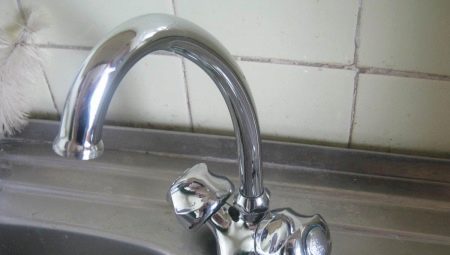
The herringbone kitchen mixer traces its history back to the 19th century, but even today it is a very popular device. An important role in this is played by the low price, ease of use and attractive appearance of this structure.
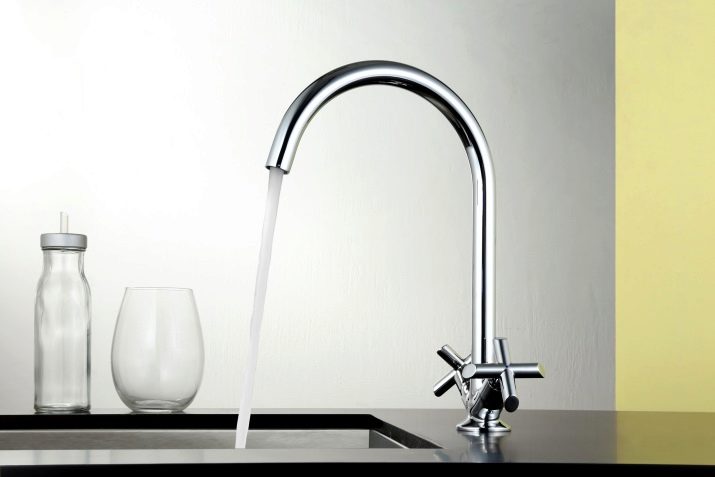
Advantages and disadvantages
The herringbone faucet for the kitchen, like all devices, has its own advantages and disadvantages.
Let's look at the pros first.
- Availability... These mixers are sold in any specialty store and are affordable.
- Durability. Many models can be used for 10 years.
- Ease of use. Such mixers have a simple principle of operation and easy adjustment of the desired water temperature.
- Attractive appearance. Currently, there is a large selection of herringbone faucet designs.
- Easy to install and repair. Such a mixer is easy to install. Any broken parts are easy to buy and replace yourself.
- Replacing the crane box, for example, will not be difficult. Possibility of replacing the worm valve head with a ceramic one. This significantly extends the life of the entire device.
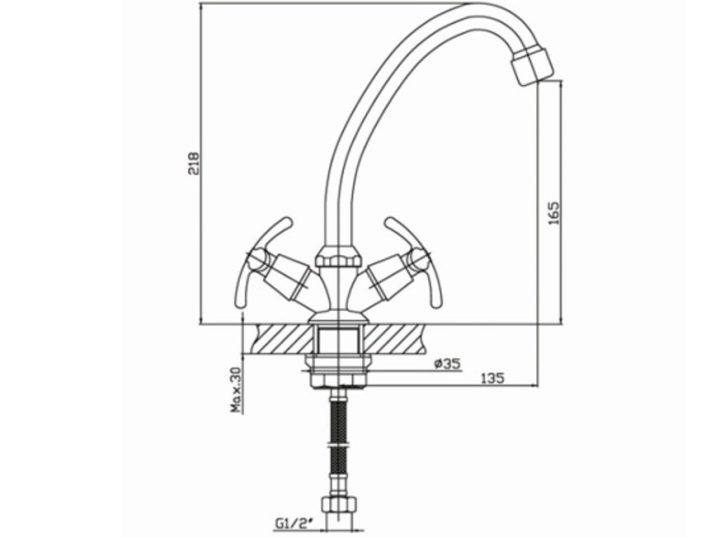
There are also disadvantages.
- Low wear resistance of gaskets. They often have to be replaced with new ones.
- Broken handles. It is also a fairly common problem that ends with the breakdown of the entire mixer.
- Mixer with two handles requires the work of two hands, which is not always convenient in a kitchen.

Device and principle of operation
The two-hand mixer "Herringbone" is a design with a tap for pouring water in the center and two side valves.
This is a two-valve (or double-lever) mechanism. By turning one valve, warm water is started, and by opening the other, cold water.
Adjustment of the two levers allows you to easily adjust the required water pressure and temperature.

Depending on the design features, pouring can be done with or without an aerator, this mixer is placed on the sink or sink in the kitchen, there is also a wall-mounted version.
Many models have a 32mm mounting hole. The water pipe should be 1/2 ”in diameter. The herringbone mixer by its tightness belongs to the group having a working pressure of 0.63 MPa, and it can be used exclusively for water supply.
The following components are included with the mixer: a spout unit, two flywheels, a gasket, a nut for fastening, a body, a valve head (with a rubber cuff or ceramic plates).
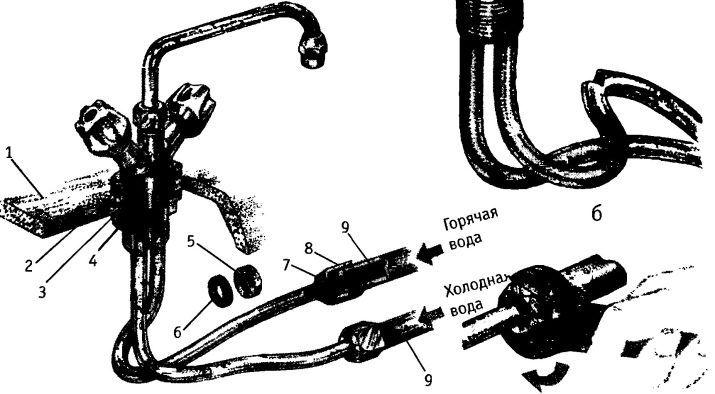
Valve head types
The valve head or valve-box is a mechanism for supplying and closing the water flow in two-hand mixers. The crane-axle box consists of a body (bolt), a union and a stem. The bolt has a thread with a gasket for a tight connection with the mixer.
The leading edge of the bolt is in the shape of a hex for attaching a wrench.
Valve heads are of two types.
- Worm gear. They function as a result of the reciprocating movements of a rod, at the end of which an elastic gasket is attached. If the gasket fits tightly, then the water is shut off when the valve is closed.
- Ceramic. This type of valve head has two ceramic plates. Both have holes and one of them is movable. When the holes align, water starts to flow out. The top plate is usually made of aluminum oxide.
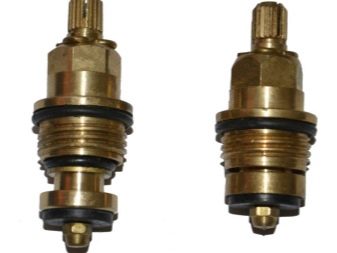
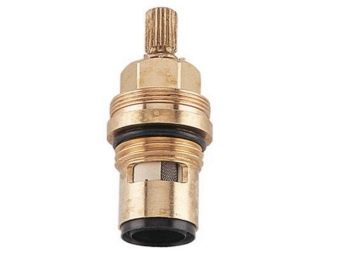
Base material
Most often as a material for the manufacture of the mixer "Herringbone" the following base options apply.
- Brass... This copper-zinc alloy has a beautiful golden hue. These mixers are durable and durable. They are not susceptible to corrosion and abrasion, and have a low cost.
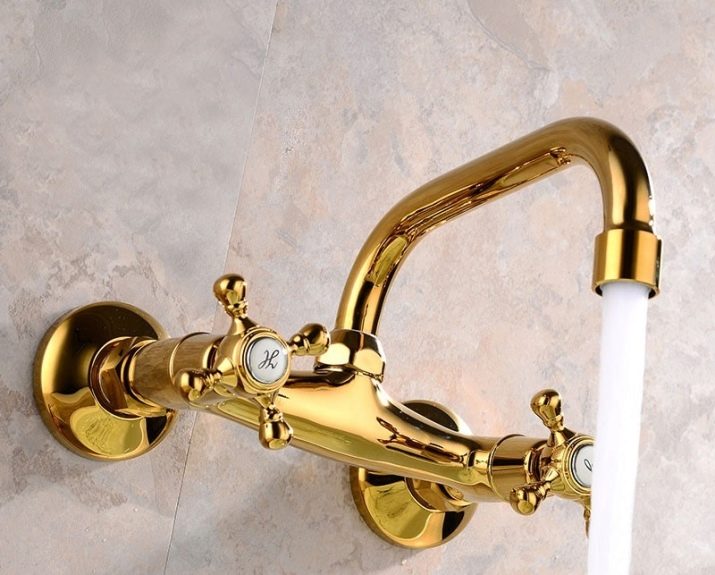
- Bronze... Strong, but inferior in service life to the brass base. The threads on bronze models are usually brass.
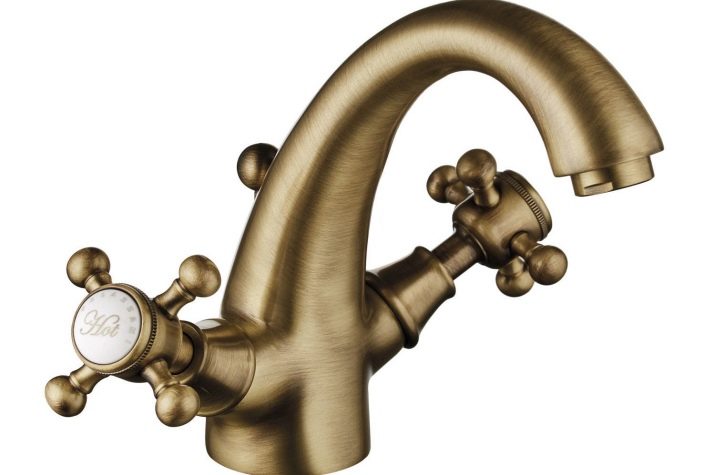
- Alloys. This option is made from silumin and light alloys based on aluminum, beryllium, magnesium. But these alloys are inferior to bronze in terms of durability.
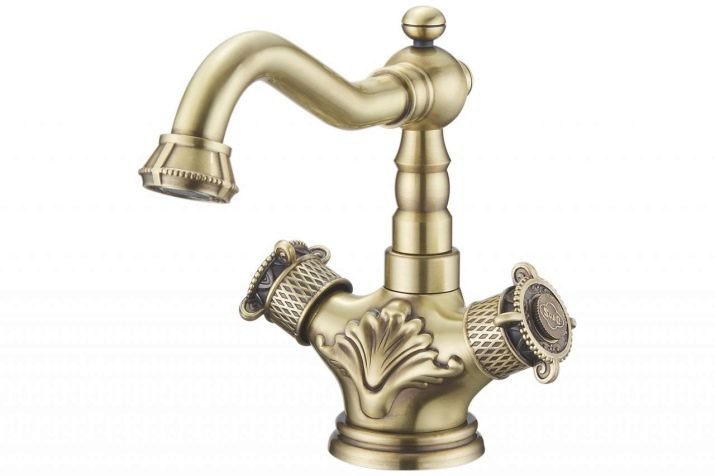
- Ceramics. Such models have an aesthetic appearance, but are very fragile, which is why they have a short period of use.
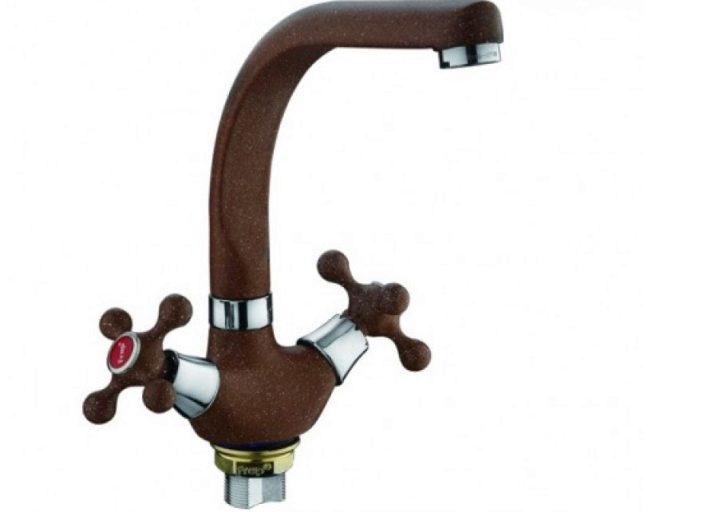
- Plastic. Such a mixer will last very little, since plastic is a very fragile, albeit cheap material.
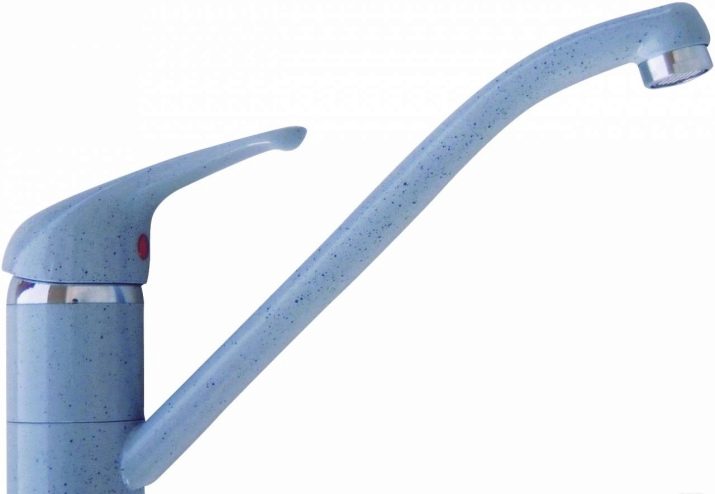
Outer cover
Quite often “Herringbone” mixers have the following types of coating.
- Nickel. Nickel is an excellent corrosion protection for the mixer. It is usually applied to parts made of brass.

- Chrome. This coating inhibits the development of bacteria and the deposition of salts. But chrome adds value to the entire product.

- From colored enamel... Attractive but not very durable coating.
Cracks and other defects that appear during use are more noticeable on it. This is the most expensive coating for these mixers.
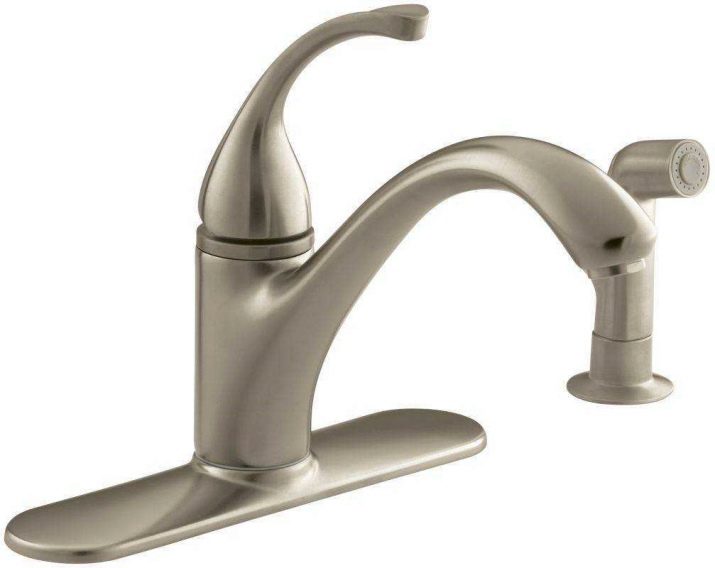
Spout options
Currently, these mixers are available with different types of spout, Let's take a closer look at them.
- Arc-shaped spout 159-250 mm long. Ideal for kitchen sinks. This faucet allows you to comfortably wash not only small dishes, but also large kitchen containers. The tap in this version of the mixer usually turns.
- Shortened spout 75-200 mm long. Such a curved faucet is most often placed on a sink that has a great depth.
- Taps with direct spout. They have 2 rotating flywheels. They are rarely used in the kitchen, they are mainly recommended for baths.
- Taps 90-110 mm long with short spout. They are often equipped with an aerator and mesh to keep out water splashes.They are also rarely used in the kitchen.
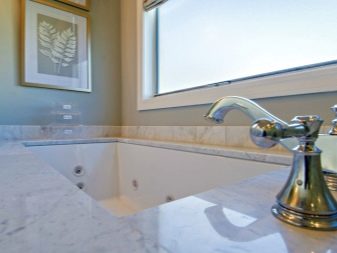
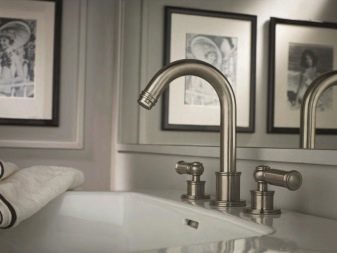
Mounting
These taps are installed in the perforation of the kitchen sink.
Do not forget to turn off the water in the apartment before starting the installation.
Then carefully remove the old mixer using an adjustable wrench. Install the new structure using the threaded bushing and tighten with the nut. After that, fix the device to the water pipe and apply a sealant or a special silicone compound.

Useful Tips
In order for this mixer to have a long service life, you should pay attention to the following points.
- The material from which the herringbone mixer is made should be the most important criterion for your choice. The durability of the entire structure depends on it.
- The ceramic valve head is more durable as it does not have a gasket. But with this option, there must be good water filtration.
- In mixers of foreign manufacturers, the gasket is pressed against the base of the crane-axle box with the help of a translational movement, which increases the service life of the product.
- When using, do not tighten the valve too much, as this increases the wear of the elastic gasket.
- If, after installation, water leaks from the tap, then tighten the nut more.
- When choosing a specific model of the herringbone mixer, be sure to take into account the general style of your kitchen interior.
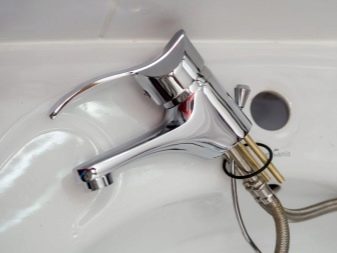
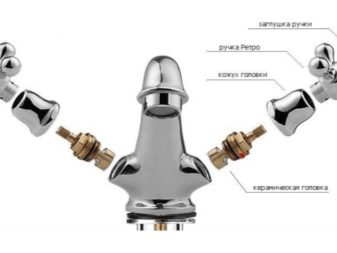
The herringbone kitchen faucet is easy to use, inexpensive and durable.
Modern designers have developed a large number of attractive options for this simple device, thanks to which it will not be difficult for you to choose a model that fits perfectly into your kitchen interior.
How to install a faucet in the kitchen, see below.








